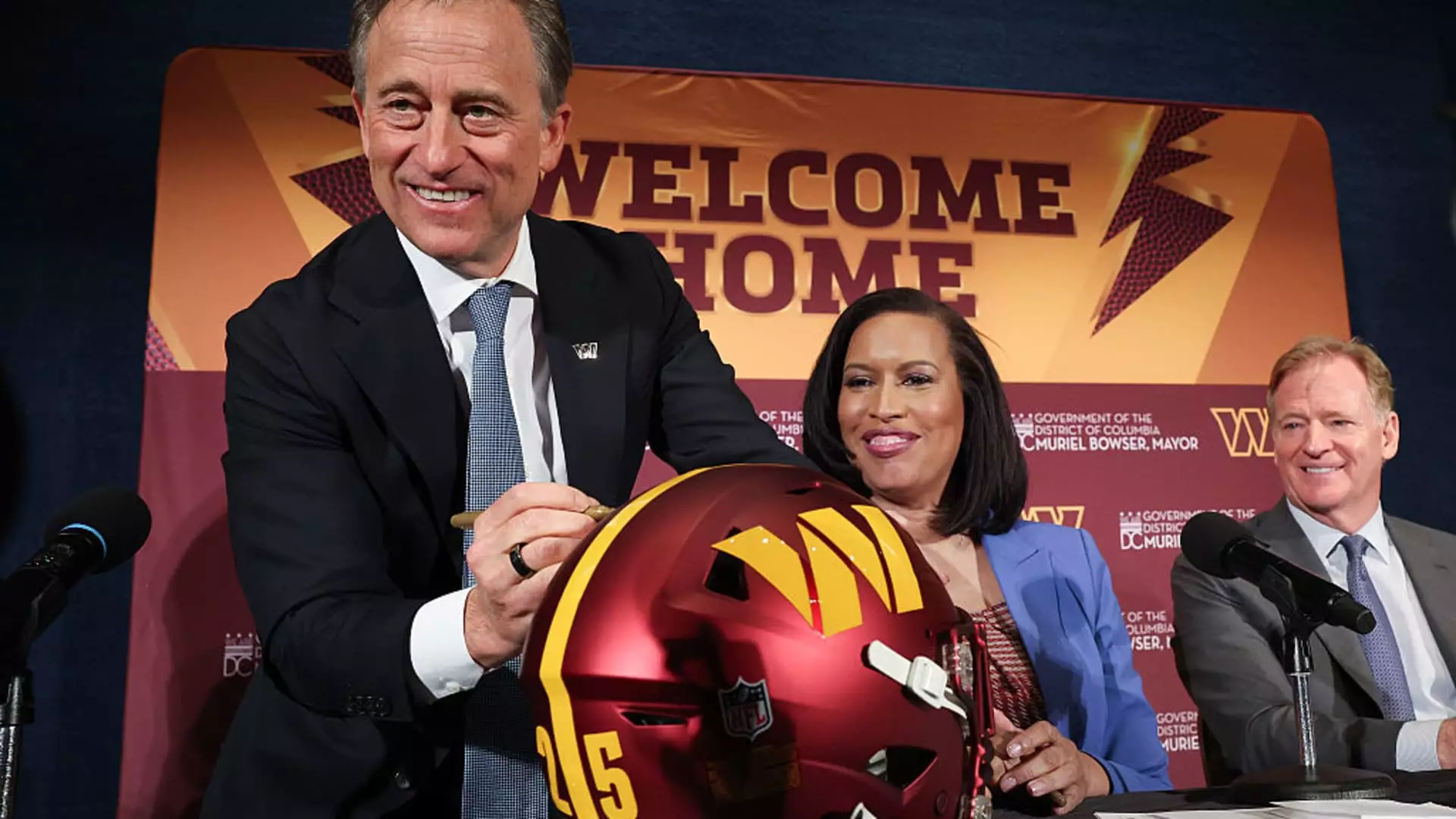The Washington Commanders’ monumental return to the grounds of Robert F. Kennedy Memorial Stadium is about more than just football; it’s a chance to revive a piece of local history that resonates deeply with fans. For many, RFK Stadium represents a glorious past filled with memorable victories, and the prospect of a new stadium here rekindles hope and anticipation. The Commanders once dominated on this turf, winning three Super Bowls and etching unforgettable moments in the hearts of the D.C. populace. By relocating back to this iconic site, the team is not merely seeking to expand brand value; they are actively engaging a community longing for its sporting roots.
The Financial Implications: A $3.7 Billion Investment
The staggering commitment of $3.7 billion to redevelop this area is both impressive and worrisome. The team will pour $2.7 billion into the project, while the city’s contribution of $500 million will mark a significant investment in the transformation of the local area. This financial structure opens up a debate about priorities: should taxpayer dollars be spent on sports facilities? On one hand, the project promises economic stimulation with an estimated $4 billion in tax revenue and job creation, but one cannot ignore the concern that such substantial resources could be allocated towards pressing social issues like affordable housing, healthcare, or education. This venture doesn’t only reflect fiscal ambitions; it also poses pivotal questions for the future governance of D.C.
Community Development: Beyond the Stadium
The new stadium’s footprint will reach far beyond the sidelines of the football field. The inclusion of housing, parkland, retail options, and restaurants aims to rejuvenate an entire neighborhood. City leaders, such as Mayor Muriel Bowser, have heralded this project as a multi-faceted community endeavor, promising to deliver a blend of sports, recreation, and urban renewal. While such initiatives can indeed enhance community dynamism, there is also the fear of gentrification that looms ominously over these developments. The jesting of lucrative amenities could push local residents out, making way for affluent newcomers. Such consequences must be meticulously addressed in the planning stages to ensure that D.C. retains its cultural heart and diversity.
Infrastructure: The Backbone of the Project
Aside from the construction of a multi-million-dollar stadium, a considerable focus will also be placed on revamping the infrastructure surrounding the site. From transport links to essential utilities, the Commanders and Events DC’s commitments aim to create a modernized environment that dovetails with the stadium’s needs. This investment can be construed as a vital stepping stone toward holistic regional development. However, one must remain vigilant; infrastructure improvements should prioritize sustainability and accessibility for all, rather than predominantly favor affluent segments of the community.
A Football Team, A City, and the Promise of Unity
As the Commanders gear up for this new chapter, there’s a palpable excitement laced with caution. Will this project merely be a superficial facelift for a struggling franchise, or can it evolve into a cornerstone for community vitality and economic prosperity? Central to that potential is the synergy between the team, the city, and its citizens—an alliance that must prioritize inclusivity over exclusivity. The stakes are high, and the narrative unfolding before us will either redefine Washington’s sports culture or exacerbate existing socioeconomic divides. The next decade holds many lessons, and as fans and residents await the fruition of this ambitious plan, they will not just be spectators; they will be active participants in shaping this new story.

